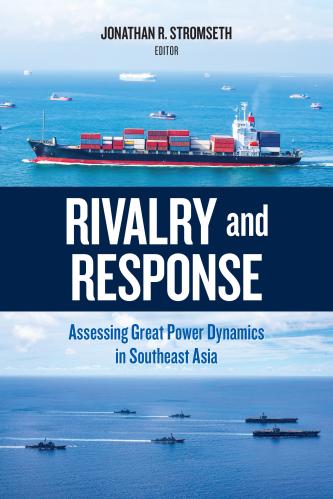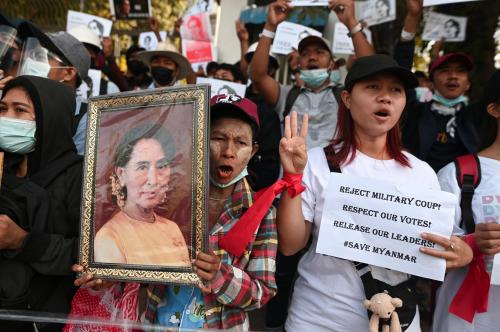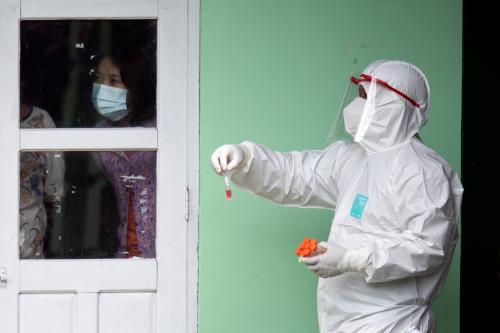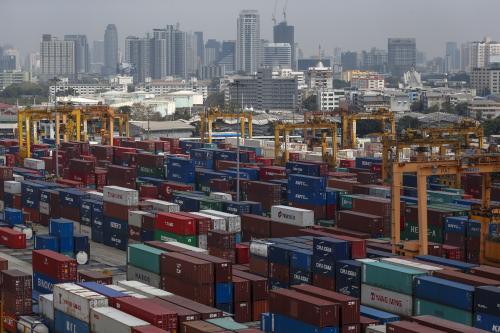Myanmar’s experiment with partial democracy allowed the genie to escape from the bottle, and the country’s citizens have no intention of putting it back. Welfare, service delivery, and governance have improved so dramatically since the 2008 constitution was unveiled and since the National League for Democracy (NLD) first assumed control over parliament in 2015 that many see a return to military rule as an existential threat. As one protester put it to the New York Times: “I don’t care if they shoot, because under military, our lives will be dead anyway.”
That is why tens of thousands of Myanmar citizens have braved arrest, gun fire, and the icy cold blasts of water cannons to crowd into the streets to protest the Tatmadaw (military) coup and arrest of Aung San Suu Kyi and other NLD leaders on February 1. These activities are not limited to the urban, ethnic Burmese in Yangon and Mandalay; protests are also taking place in more far-flung and rural regions as well. Support for the protesters has even been voiced by Rohingya refugees in Bangladesh.
While newspapers have been covering these courageous activities, popular commentary on the situation has lacked context, generating real confusion among readers about what is going on and potentially undermining international support for Myanmar’s brave citizens in their quest to parry the coup. In fact, if one were only tracking the Myanmar crisis through popular headlines, it would be extremely hard to understand why the protests are happening at all. If the military was always in control and Myanmar’s democracy was a façade, why was a coup even necessary? And what exactly are the protesters risking their lives to preserve? If Aung Sun Suu Kyi was a closet-authoritarian within her own party and a Buddhist nationalist, why do protesters see her release as critical for their democracy? If “the lady’s” defense of the military’s horrific attacks on the Rohingya diminished her on the international stage, why should the international community exhaust any effort to save her?
These questions above emanate from three underappreciated facts that lead analysts to underestimate what the short period of partial democracy delivered for Myanmar’s citizens and why they are risking their lives to preserve it.
1Tatmadaw rule (1962-2011) was miserable for almost all Myanmar citizens who were not in the armed forces.
While generals found ways to enrich themselves through exporting gems and resources, and building companies to take advantage of increasing trade, they showed very little interest in actually doing the hard work of governing. We can see this in basic welfare and public service delivery statistics. In 2011, when the Tatmadaw first stepped back from power, Myanmar was one of the world’s poorest countries, with 42% of the population living below the national poverty line. Less than half the population had access to electricity, and less than two-thirds had access to clean drinking water.
It is also clear in the condition of the regulatory state. Little effort was made to actually record new laws and regulations or build a functioning civil service outside of the armed forces. The system allowed the regime to maximize patronage opportunities, but it led to highly arbitrary rules and decisions. Because Myanmar’s economic opening followed Vietnam and Laos, there is a common assumption that the country possessed the same distortionary over-regulation that its neighbors carried as a legacy of central planning. In fact, the exact opposite was true. Myanmar was extremely under-regulated. When the NLD assumed control of parliament in 2015, it had to craft Myanmar’s basic regulatory system and civil service almost from scratch. New foreign investors in the country were surprised to find that many guiding regulations for labor practices, land acquisition, and safety practices dated back to the early days of independence in the 1950s and some to the British Colonial period.
Few commentators appreciate the daunting challenge that the civilian government faced in 2015 in trying to craft the governing institutions of a modern state with hardly any local bureaucratic capacity to draw upon. Many individuals with previous civilian governance experience had newly emerged from 30 years of prison with limited understanding of how much things had changed — some even struggled with learning to use computers and the internet. Younger candidates were eager but were graduating from a school system that had deliberately de-emphasized the social science and public policy skills that might pose a threat to the military regime.
2The NLD administration had sufficient political power to influence policies that enhanced citizens’ lives.
Although the constitution reserved 25% of seats in both houses of parliament (the Assembly of the Union) for the military — enough to prevent changes to the 2008 constitution — the civilian leadership had ample leeway to handle the mundane activities of government that improved citizens’ lives. As numerous commentators have pointed out, the 2008 constitution placed three ministries (home, border affairs, and defense) under direct military control.
However, the rest of the Union ministries were headed by NLD appointees, which provided them a great deal of power over commerce, finance, education, natural resources, land, agriculture, and infrastructure, among other key governing arenas. The NLD was able to pass laws reforming these sectors with simple parliamentary majorities, the leaders of the Union ministries they headed could issue guiding regulations, and their officials in state and region governments with newly decentralized powers could implement them.
3Support for democracy grew as governance and public services improved after 2015.
As a result of NLD control of government, welfare for the average Myanmar citizen has advanced dramatically over the past 10 years, and people express strong desires for preserving the democratic privileges that have delivered these gains. By 2020, the poverty ratio had been reduced to 25% of the population as the country advanced, according to the World Bank’s criteria, from low- to middle-income status. Service delivery also improved. By 2017, 70% of the population had electricity access and 82% had access to clean water. All of these numbers will improve further with the next household living standard survey.
We can also see the improvement in the Myanmar Business Environment Index (MBEI), produced by the Asia Foundation, which is a survey of business that gauges managers’ experience with doing business on 10 core sub-indices, comprising over 100 indicators: How long does it take to get a business license? How good is the public infrastructure? How often is it necessary to pay bribes, and how much? The survey results are then analyzed statistically to produce an index for each of the 14 state and regional governments, creating a public benchmark of business friendliness that both government agencies and private-sector constituencies can use to advocate for change.
Critically, the report includes 1,200 firms in 67 townships that were surveyed in both 2018 and 2020, allowing researchers to compare the experience of the same firms over time on the exact same questions. The MBEI for these firms rose 5.4 points, from 55.1 in 2018 to 60.6 in 2020, a 10% improvement on the 100-point index. In fact, every single state and regional government improved on the Core MBEI. Figure 1 shows that the governance improvements were most pronounced in reducing the burden of post-entry regulation, augmenting infrastructure, enhancing transparency reducing favoritism, strengthening environmental compliance, and facilitating labor recruitment.
Figure 1: Changes in Core MEBI at firm level, by sub-index
 Source: Myanmar Business Environment Index 2020.
Source: Myanmar Business Environment Index 2020.
We must understand the overwhelming electoral victory for the NLD in 2020 in the light of these improvements and not just in popular devotion to Aung Sun Suu Kyi. Myanmar citizens’ understanding of democracy is directly connected to the governance improvements that they have experienced. As Figure 2 shows, when asked about the meaning of democracy in the 2019 Asian Barometer Survey, the highest proportion (30% of respondents) answered that it was good governance — compared to 18% who answered “freedom” and 15% who answered “equality.” And as governance has improved, so has support for the concept of democracy from 87% in 2015 to 90% in 2019. Only 9% of citizens in 2019 reported that an authoritarian government is preferable to democracy under any circumstances. While most citizens in the country recognized that their system of government was far from perfect (83% reported it has minor or major flaws), only 6% of survey respondents answered that their country was not a democracy in 2019, compared to 19% in 2015.
Figure 2: Myanmar citizens’ understandings of democracy, 2015 vs. 2019
 Source: Asia Barometer Survey.
Source: Asia Barometer Survey.
Protesters are stepping into the line of fire today because they fear losing these gains and returning to the dark days of junta rule. To be clear, Myanmar was never a full-fledged democracy, and the treatment of the Rohingya — which Aung Sun Suu Kyi defended internationally — was unconscionable. The NLD leadership also has much unfinished much business in terms routing out poverty, reducing ethnic disputes, and eliminating corruption and inequality.
Nevertheless, we should appreciate the NLD’s very real accomplishments and recognize that from the perspective of citizens, Myanmar in 2021 was a vastly more free and open society then existed in 2008. The international community should do what we can to condemn the coup and demand a return to civilian authority. The punitive measures announced by the Biden Administration are an excellent first step. The only people who want to put the genie back in the bottle are the generals currently in charge.
-
Acknowledgements and disclosuresRachel Slattery assisted with graphic design for this piece.








Commentary
The genie will not return to the bottle: Understanding the pro-democracy protests in Myanmar
February 11, 2021